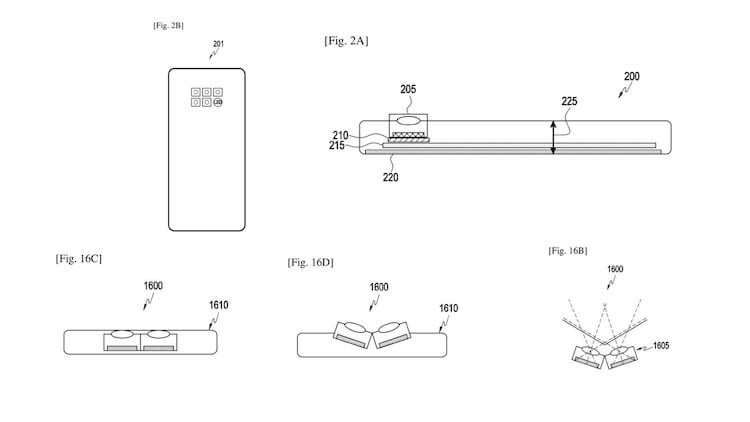While many Chinese manufacturers are just trying to figure out how to cram as much as possible into a smartphone camera so that each focal length has its own lens, some other companies are going their own way. For example, Huawei (although it is Chinese) tries to focus on the size of the sensor. Samsung also goes its own way and often tries to offer something new. For example, a sensor with a resolution greater than 100 megapixels. I have a special relationship with it and I am not inclined to exaggerate its importance, but the new feeder chamber, which the company recently patented, is really interesting. She can take cameras to a new level even because it just didn't happen. It may be worse, better, or no change, but it will definitely be new.

The camera is the most important part of a smartphone for most users.
Is the smartphone camera important?
Nowadays, when we see a phone with one camera, we do not even think that it can cost more than 10,000 rubles. The only exceptions are a couple of models iPhone and the Google Pixel 3a. You won't even be able to come up with more examples on the fly.
But there are examples of the opposite, when Jinga offers a smartphone for 4000 rubles, on the box of which “Dual Camera Design” proudly flaunts. This does not mean that the smartphone has two cameras. He just has two camera windows, in one of which there is a sensor, and in the other – just a picture of the sensor, that is, a dummy. Great, isn't it? This is not even the case when a flash is inserted instead of the second module. This is at least not a deception, but a design move, which, however, has a completely understandable meaning.
More expensive devices must have at least three cameras, otherwise the buyer will simply refuse them. Even iPhone is already available with three cameras, which is not typical for him.
Samsung's new camera
Against the background of all this, Samsung, apparently, decided to reconsider its approach to the camera and not to chase a large number of sensors, but to rely on a technological solution to the camera design, and not the number of windows or sensor resolution. The camera should now tilt.

We need such a patent!
The full patent can be found here, and above you see the most interesting of what it contains – in fact, the very design of the camera. The pictures show what Samsung is trying to do. The camera lenses are flat when not needed, but can then tilt back and forth when needed. The slope is not some kind of mystical feature and it has a very specific meaning. This creates different points of view. In theory, this could dramatically change the image that the phone captures. You can either achieve interesting distortion effects, or simply expand the field of view, making the picture almost panoramic.
In one of the positions, the image can be obtained in the style of a fisheye lens. Also, with the help of special processing by hardware and software of the smartphone, you can even achieve an increase in the resolution of the image without the need to install a more complex sensor.
How Samsung's new camera will work
It is impossible to say exactly how the cameras will work, since this is only a patent, but most likely, if the idea is realized, something really interesting awaits us. Nowhere is it reported that modules of this design will shoot this or that image. It is also not reported how the mechanism for changing the angle of the location of the modules themselves will be implemented. In this situation, we can only assume that they will be able to move themselves due to the built-in drives. This would be a much more logical decision than another option in which you have to do everything by hand. In this case, it would be more difficult for the camera to process the image and changing would be very difficult. Elementary, it would lead to smudging of the lenses.

This should be interesting.
When will the smartphone with a moving camera be released / h2>
At the moment, we cannot talk about which smartphone this system will appear in and when it will be. Only one thing is clear – Samsung is interested in this technology and admits that it or someone else will release it to the market.
Here you must also understand the specifics of such cameras. Firstly, they will move, and these are unnecessary elements that can affect the water resistance or simply make the smartphone less resistant to drops. I'm not even talking about the dirt that can get under the cameras.

And there will be six more cameras.
Secondly, the use of this design will increase the thickness of the smartphone. You can do without this, but then you have to decide something with the current components or modern cameras. The cameras are already cramped in the body of the devices, because of this, they climbed out like acne. What will happen if the camera is separated into a separate body (and it should be) and make it move?
All this is very interesting and mysterious, but now, when we ask you to tell us in our Telegram chat which smartphone camera you would like to see in the new model, you will have a direction in which you need to think. Samsung will also think. With a high degree of probability, we can say that there will be no such camera for at least another two years, but, as they say, wait and see. So far, this is only a patent.
